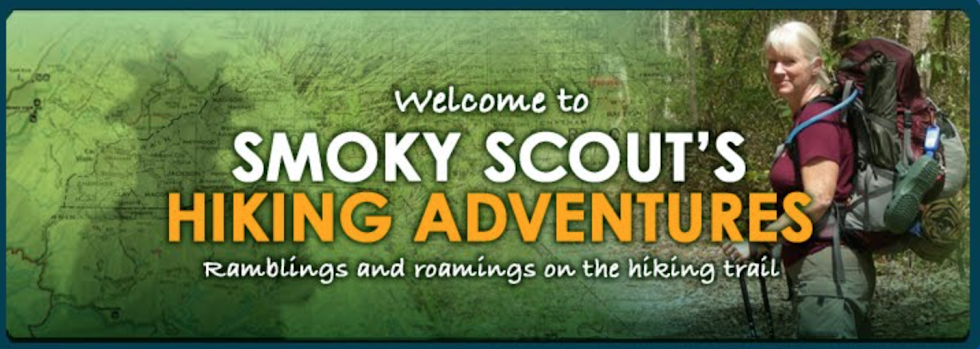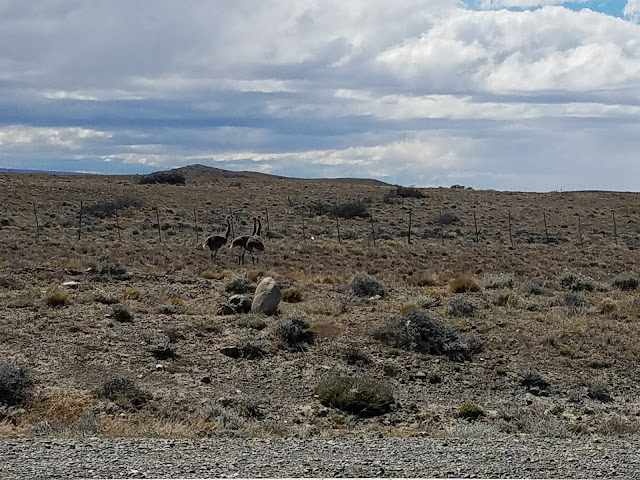Patagonia 2017: El Chaltén & Laguna Torre – Dia Dos –
2/9/17 – 22 km
Driving from El Calafate to El Chaltén takes 3.5 hours with
no stops, but how boring is that? Two
lanes of pavement on Ruta 40 and Ruta 23 pass through the desert steppe
landscape in every shade of brown imaginable – umber, russet, ecru, toast, cinnamon, tan, beige, auburn, khaki, dun – and sharp eyes are needed to
distinguish the fauna from the rocks and sand.
I had not done any reading up on wildlife in Patagonia but I got an
education real quick.
First up is the guanaco, the same species as the llama and
the alpaca, although those two cousins are domesticated while the guanaco is
all wild, baby. They don’t have
distinctive variations in color like llamas do; they stick to brown. Between 3 and 4 feet tall at the shoulder,
weighing between 200 and 300 pounds, they are very shy in the remote reaches of
the desert. If our car slowed down too much in a stealth attempt to photograph
them up close, they quickly moved away. [We did see some more placid guanacos
in Torres del Paine later in the trip.]
Guanaco on
the ridge
“Slow down, turn on the lights, do not honk.” Rules for lots of situations when you think
about it.
Barbed wire fencing runs parallel along both sides of the
road. I’m not sure what the primary
purpose is, as we saw more than a few guanacos easily leaping over them. However… the gruesome reality is that not all
of them make it. Over the course of our
two weeks in Patagonia we saw dozens of guanaco carcasses hanging from fences,
in varying stages of decay, sometimes just the skeletons, sometimes more
recent. One day we stopped and walked
over to inspect a carcass. I’ll show you
a photo sometime.
Next up is the lesser rhea (aka Darwin’s rhea), a flightless
bird that looks like an ostrich. They
are between 35 and 40 inches tall and weigh between 30 and 60 pounds. Their coloring is mottled brown and white,
good desert camo.
The friendliest critter is the Patagonia fox or South
American gray fox. He greets tourists at
the best viewpoints along the road and is happy to clean up any food that you
discard.
Lago Veidma
We have arrived
El Chaltén is a small village (pop. 1,000) within Los
Glaciares National Park and our home base for the next couple of days. El Chaltén means “Smoking Mountain,” a
reference to the near-constant cloud wreath around the top of the Fitz Roy
range. First we stopped at the visitor center for maps and received a quick but
thorough orientation of some local hikes. We chose an 11-mile out-and-back
route to Laguna Torre for the afternoon. I was working to get rid of a headache
(caffeine withdrawal) and felt skeptical that we could do it, but daylight continues
until after 9:00 p.m. so we’ll see.
Our Airbnb apartment that Cathy had booked wasn’t ready yet,
so we ate a snack and prepared for our hike.
I felt a little discombobulated and swallowed a heaping helping of
ibuprofen, hoping it and some fresh air would help my head (they did). We left our car in front of the apartment and
walked to the end of our street and onto our trail to Laguna Torre and the
Cerro Torre range. How cool is that?
After two kilometers uphill, the trail flattened out and we
encountered many hikers, all wearing daypacks or backpacks and properly
outfitted – no flipflops and tube tops. At
a tent station a park ranger quickly recited the rules and told us the water
was safe to drink (hmmm). The trail had
kilometer markings which made it super easy to track progress.
This sign shows what exists versus what we could see today –
lots of cloud cover and not much “mirador” except for Cerro Solo, the mountain
in the center with the “ski mask” look, a landmark that stayed with us
throughout our hike. Cerro Solo is one photogenic mountain.
Rio Fitz Roy down in the canyon
Usnea, a lichen called old man’s beard
Cerro Solo
Chilly, silty glacier melt Rio Fitz Roy
We hiked alongside the river, following a rock-lined path
through small hills. We topped a crest
and looked down onto Laguna Torre: opaque gray water, choppy waves due to a
stiff wind, and Grande Glacier flowing down at the far end of the lake. This is the first of many glaciers we’ll see
in Patagonia.
A ridge curved around on the right side of the lake and we
hiked halfway up to a higher viewpoint, then descended back to the beach to get
up close and personal with chunks of ice that were floating near the shore.
Cathy holds a chunk of glacier ice
The return hike was quick, looking back once in a while to
see if the view had changed, ever hopeful to get a look at the real "mirador."
Grande Glacier hidden in the mist
Rocky peaks visible to the right
And then….the Cerro Torre!
We were back on our street around 6:45 p.m., unloaded the
car and checked out our awesome apartment:
kitchen, living room and bathroom downstairs, two bedrooms upstairs –
hot showers and a hair dryer! [$82 per night for 4 people = $20.50 each]
And the real treat – wifi!
We’re all addicted, especially Cathy, who could not resist reporting on
the political nonsense of the day. We
laughed, we moaned, we criticized – and then we were hungry.
Cleaned up and ready for a celebration, we walked toward the
center of town looking for dinner. We
landed at Technado Negro (more locro stew) and toasted to Día Dos of our
Patagonia adventure with a delicious Malbec.
What’s that waking me up at 4:00 a.m.?? Sounds like a freight train! Can wind really
be that powerful? What does that mean for tomorrow?
"God never made an ugly landscape. All that the sun shines on is beautiful, so long as it is wild." ~John Muir































No comments:
Post a Comment